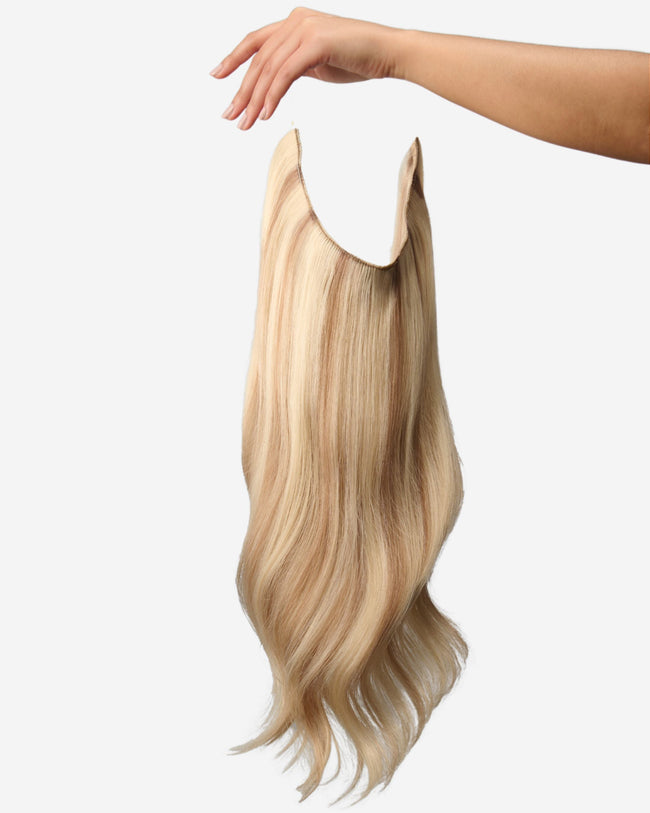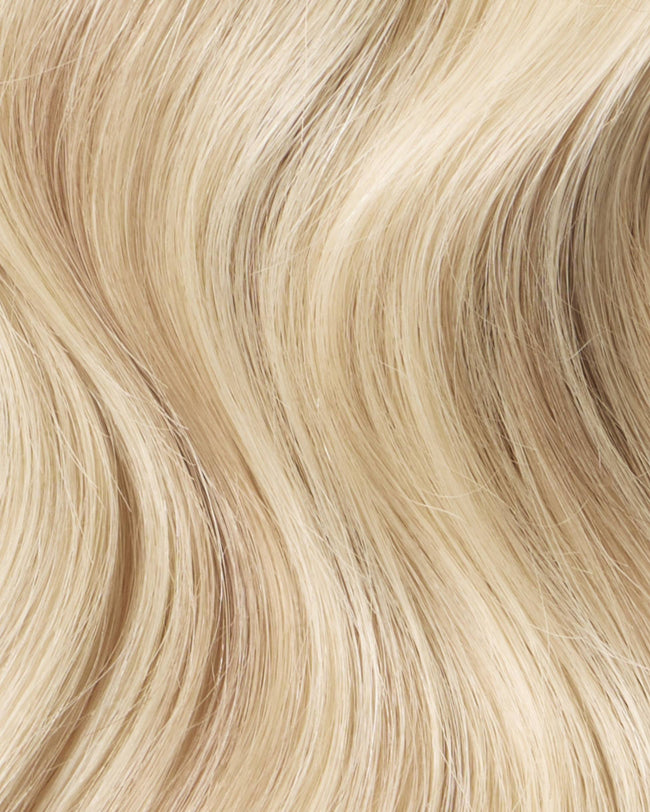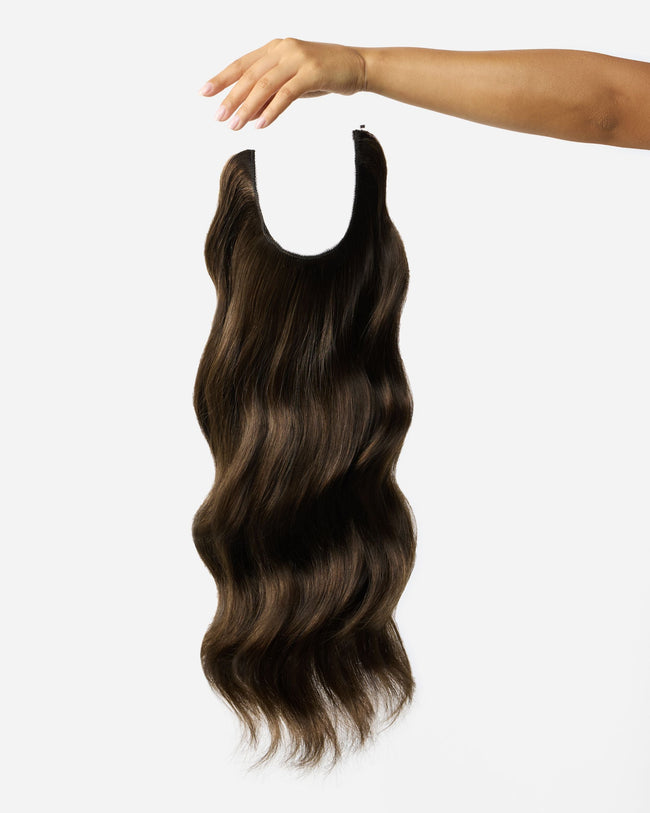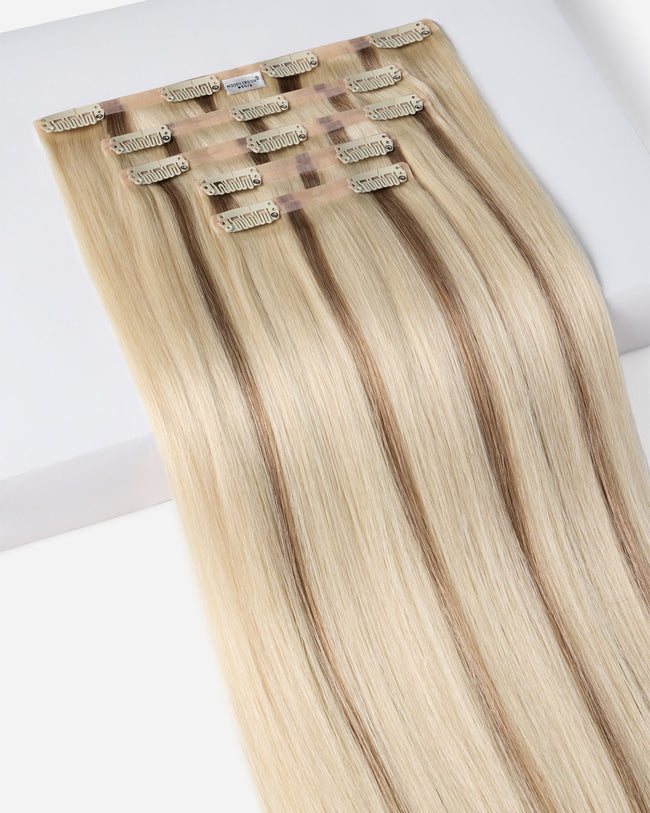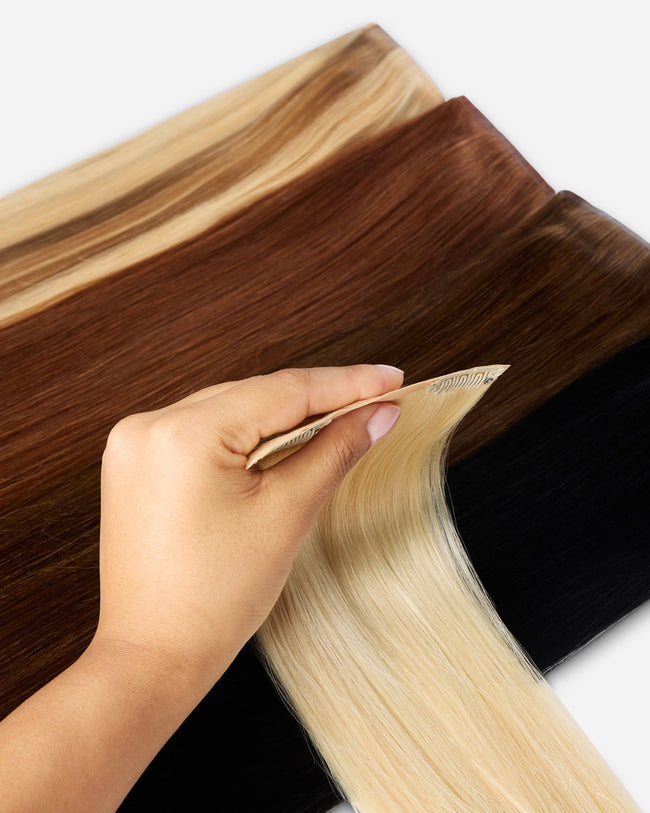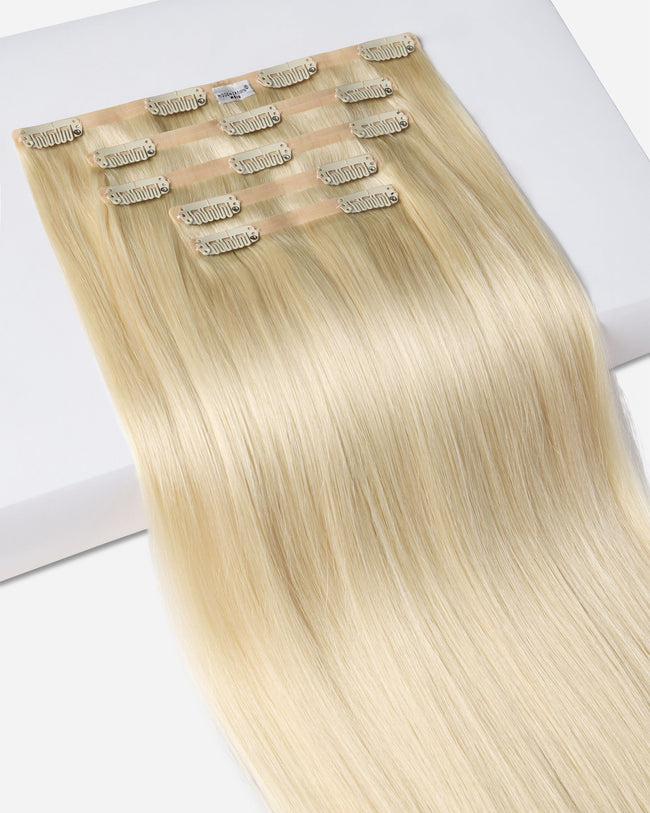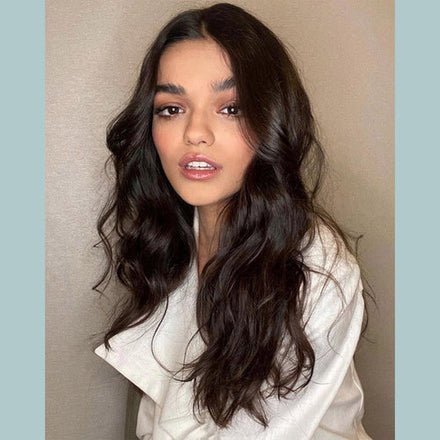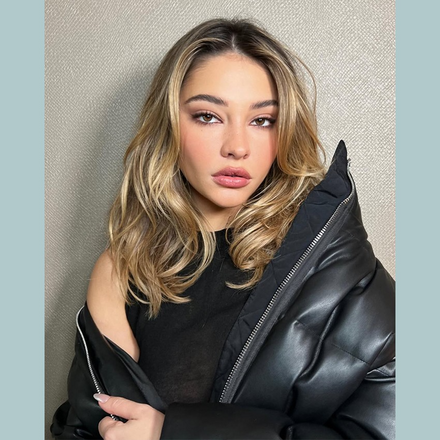
How to Get Rid of Oily Hair Patches - Tips + Treatments
We shampoo and condition our hair regularly and we still have a greasy patch that annoyingly shows up a day or two later, making our hair feel dirty, unmanageable, and flat. What’s going on? Oil, or sebum, is our hair’s natural way to protect itself at the root, but various triggers can make our scalp produce more than it really needs, leading to an oily patch that pretty much ruins any hair style. The oil grabs onto dirt, products, and sweat making a greasy patch that starts at the roots and travels down the hair shafts. We don’t want to eliminate the oil from our hair completely, which would cause our scalp to be dry and a less ideal environment for hair growth and support. Oil production on the scalp is healthy, but an overproduction of it can really be an issue, which is why it’s a vicious cycle that makes us shampoo and clean our hair obsessively, in fact making things worse. But we don’t have to live with greasy hair, and there are plenty of ways to treat it. We break down the best solutions to help you combat oily hair and find the perfect fix for you:

What triggers greasy and oily hair?
- Sweating from exercising
- Heat and humidity
- Not washing our hair properly or thoroughly enough
- Using the wrong products for our hair type
- Hormones - periods, pregnancy, and menopause causing fluctuations
- Using products that add moisture (these actually contain oil)
- Washing our hair too often (which prompts the scalp to produce more sebum)
- Using a hair dryer, which stimulates the scalp to produce more sebum while drying the rest of the hair out
- Hard water - residue and plaque can build up increasing oil production
- Wearing hair pulled up overnight
- Not regularly washing our hairbrush

Does my hair type have something to do with oily hair?
Fine or thin hair: straight hair tends to have a smoother follicle so the oil has nothing to stop it from going along the shafts, making hair greasy and flat.
Curly hair: this hair type tends to have greasy patches on the crown of the hair that stays in one patch rather than being distributed through the hair.
Combination oily scalp with dry ends: the oil tends to isolate in patches on the scalp while the rest of the hair is very dry. The ends of the hair are the oldest parts of the follicles and are subsequently more damaged by products, heat, overall health, or diet. Chemical processing and coloring can makes the situation worse.
Dandruff-prone hair: dandruff is the result of a type of fungus which is fed by the oils on the scalp. Buildup of product that isn’t properly washed out causes the sebaceous glands to increase oil production, creating a greasy patch.

Start with shampooing - how to beat greasy hair by washing:
- Wash less frequently to prevent stripping your hair of its natural oils which will actually spur more sebum production.
- Change your shampoo and conditioner: avoid “moisturizing” products aimed at dry or over-processed hair, those that make hair “shiny” or “smooth” as these contain oils and chemicals that coat the hair, which will increase oil production on the scalp.
- Avoid shampoos and conditioners with silicone products (those that have ingredients that end in “…cone”) which builds up on hair, collects dirt and grime, and exacerbates greasy patches.
- Use “clarifying” or “purifying” shampoos: these remove excess buildup on hair and scalp. There is a caveat: these products use stronger detergents than usual shampoos to lift grease, so they are too strong for everyday use. Stick to once-a-week treatments.
- Use only a dime sized amount of shampoo at a time, and wash in water that isn’t too hot which can cause sebaceous glands in the scalp to go into overdrive producing oil to protect the scalp and roots of hair. Rinse with cool water to boost shine.
- Brushing: using the right brush for your hair type helps re-distribute oils along the hair follicles.
- Clean your brush regularly: product, greasy hair, and oils buildup on your hairbrush which goes right back into just-washed hair. Clean your hairbrush with shampoo and air-dry regularly to keep it oil and grime-free.

Quick fixes for oily hair patches:
- Toner: toners moisturize, balance pH levels, remove buildup, treat skin irritations, and unclog pores on the face, and work just as well on the scalp. Spritz or dab witch hazel or your favorite face toner on the greasy area while hair is still dry. Leave on for 15 minutes and shampoo as usual.
- Dry shampoo: use dry shampoo only on the greasy area and brush through hair thoroughly to blot oil and leave hair more manageable between regular washings. Caveat: if you leave it in your hair overnight you are essentially leaving the oily buildup on your hair as well, which in turn causes dandruff.
- Go with your natural hair texture: Heat exacerbates sebum production. Give your hair a rest from blow drying and flat-ironing which can cause greasy patches to be more visible.

Treat an oily scalp with DIY remedies and supplements:
- Fish oil contains omega fatty acids that treat hair from the inside with nutrients and proteins that improve the quality of your hair and condition of your scalp.
- B2 and B6 vitamins: B2 (riboflavin) and B6 (pyridoxine) help regulate sebum production.
- Probiotics: a healthy microbiome in your gut has a direct effect on your scalp health.
- Aloe vera: look for shampoo and conditioner with aloe vera, or make a DIY aloe mask to remove oils, treat the scalp, and leave hair shiny and soft. Blend fresh aloe vera gel into a bit of olive oil and apply to hair. Leave for twenty minutes and shampoo as usual.
- Tea tree oil: treats dandruff by reducing sebum, unplugs hair follicles, and protects hair shafts with anti-fungal and antiseptic qualities. Add 10 drops to shampoo and wash as usual. Repeat twice a week.
- Lemon: cuts grease and removes buildup while helping to treat dandruff. Mix one cup of water with 2 tbsps of lemon juice, massage into scalp and hair before rinsing out.
Greasy hair doesn’t have to be a constant problem. There are lots of solutions that address the issue and don’t require a lot of effort. A simple switch in haircare habits, using the right products correctly, and adding the right nutritional supplements, can greatly reduce or even eliminate excessive oil. Reclaim your beautiful hair!
